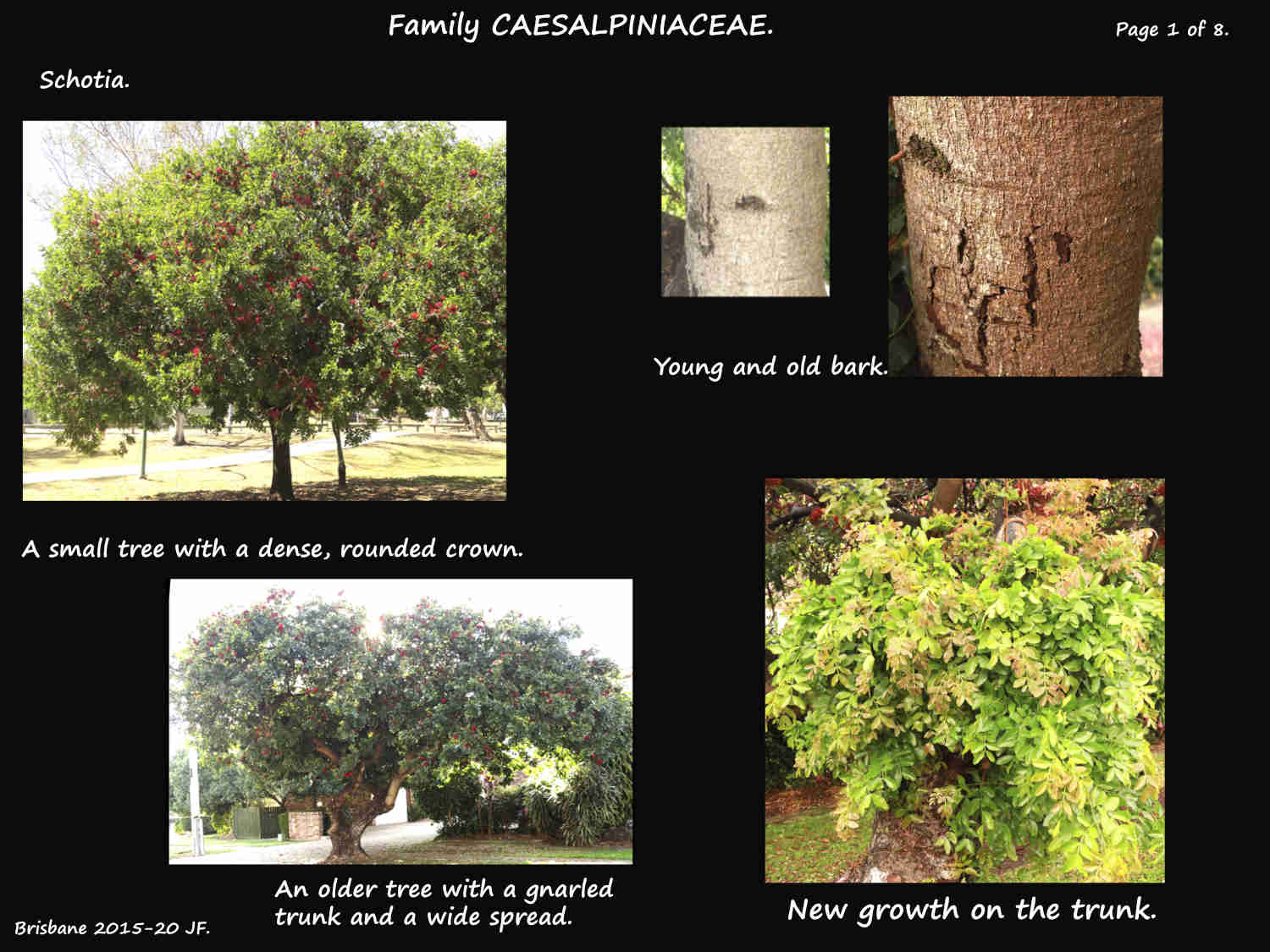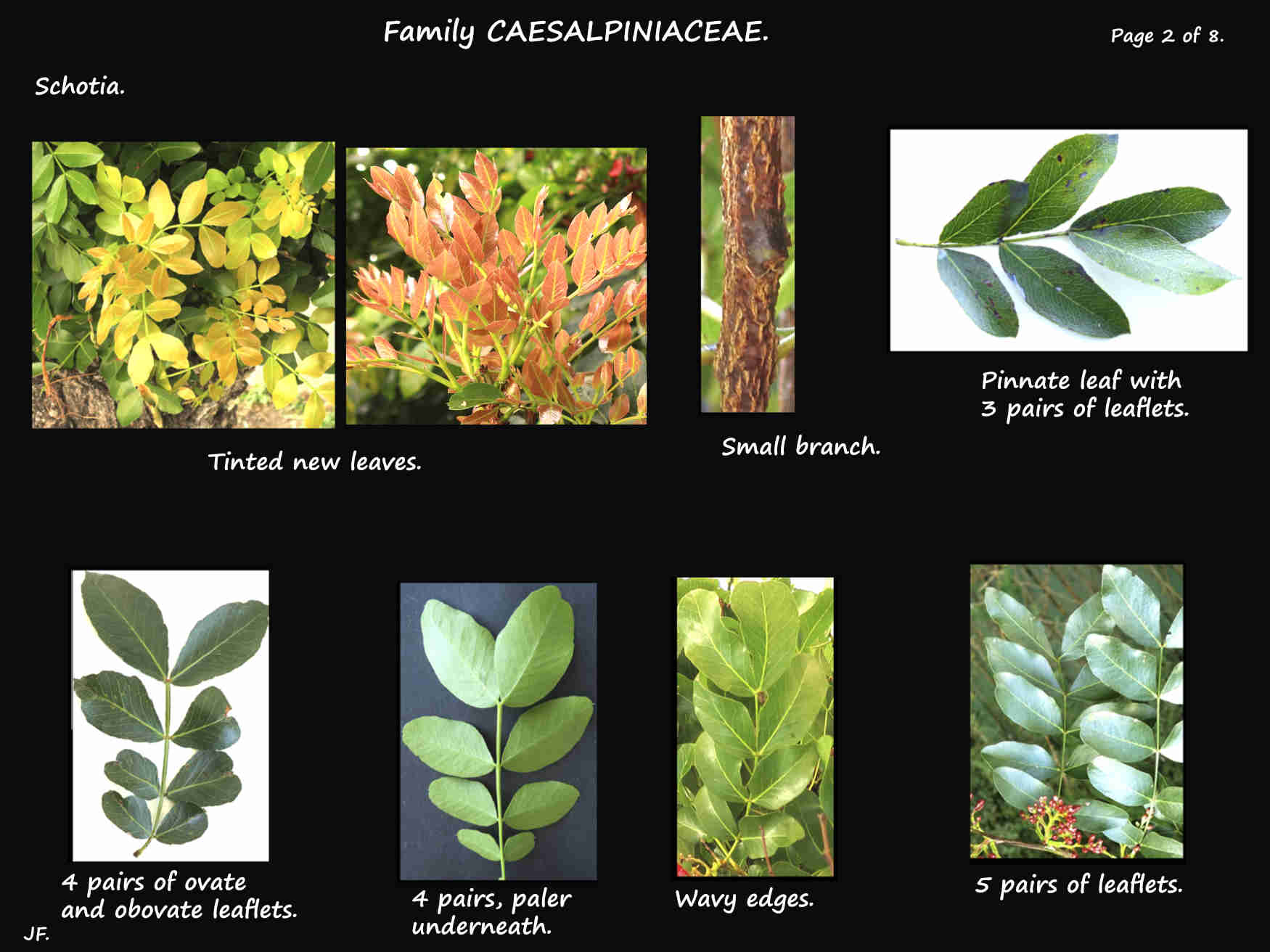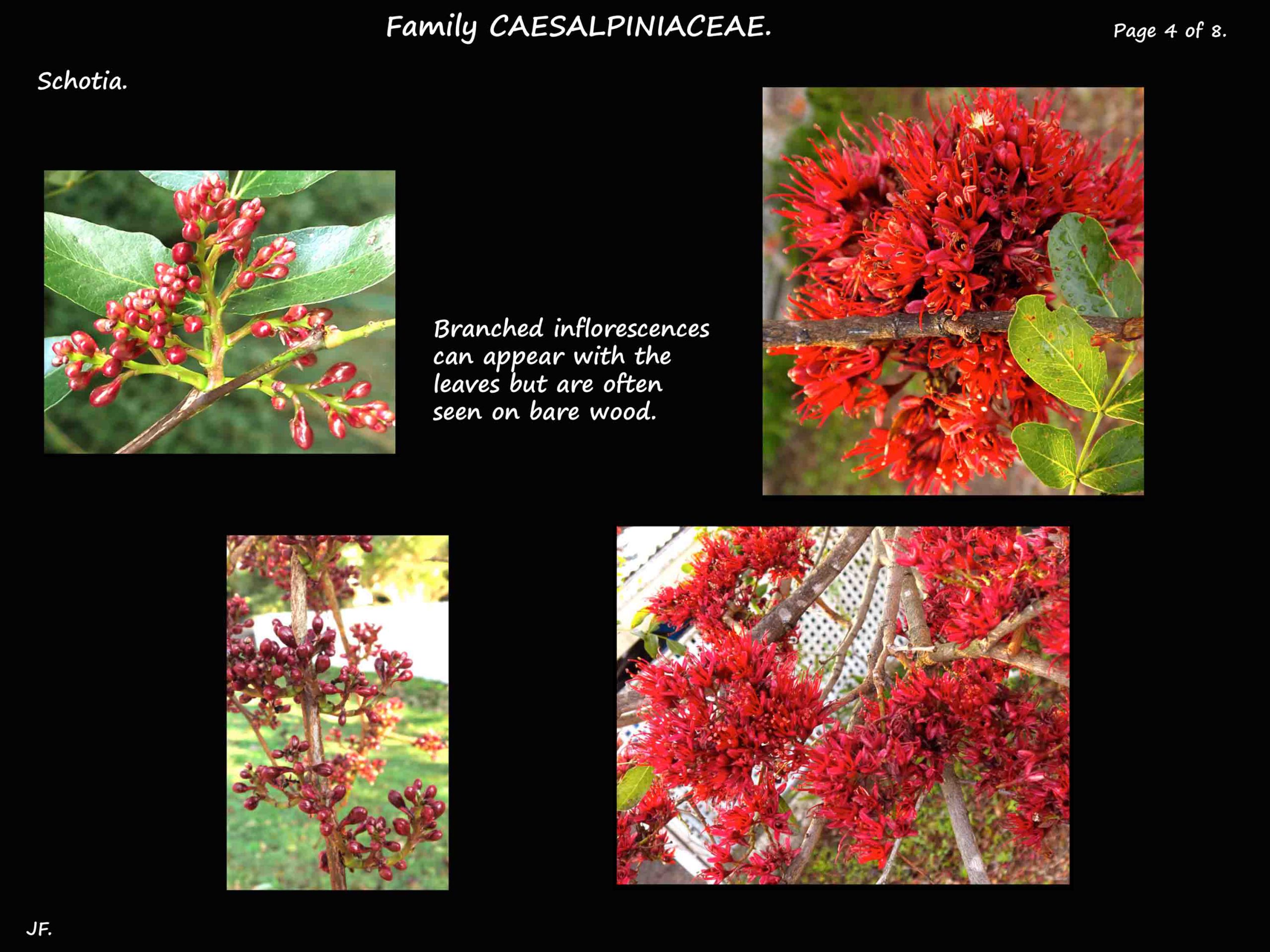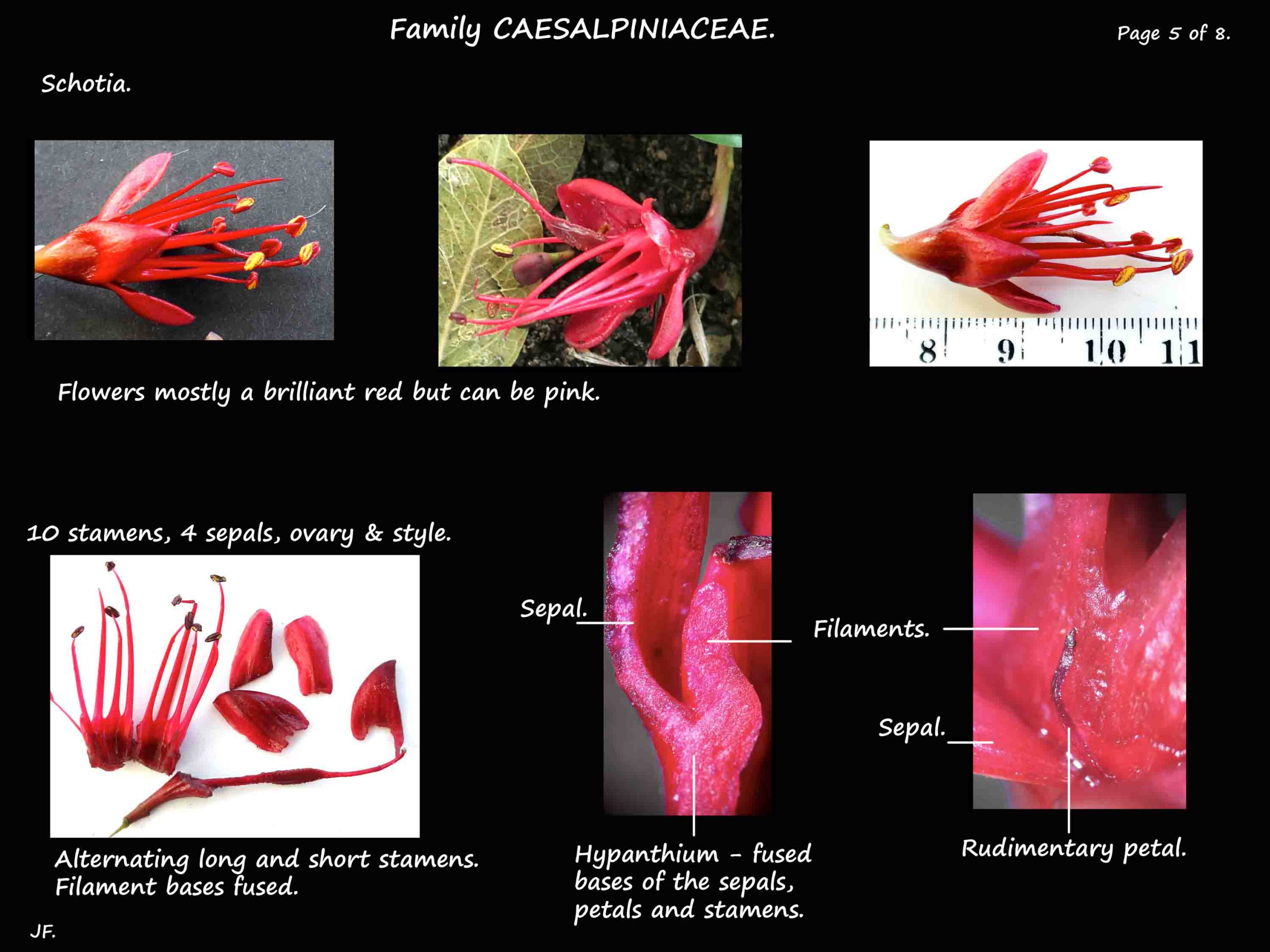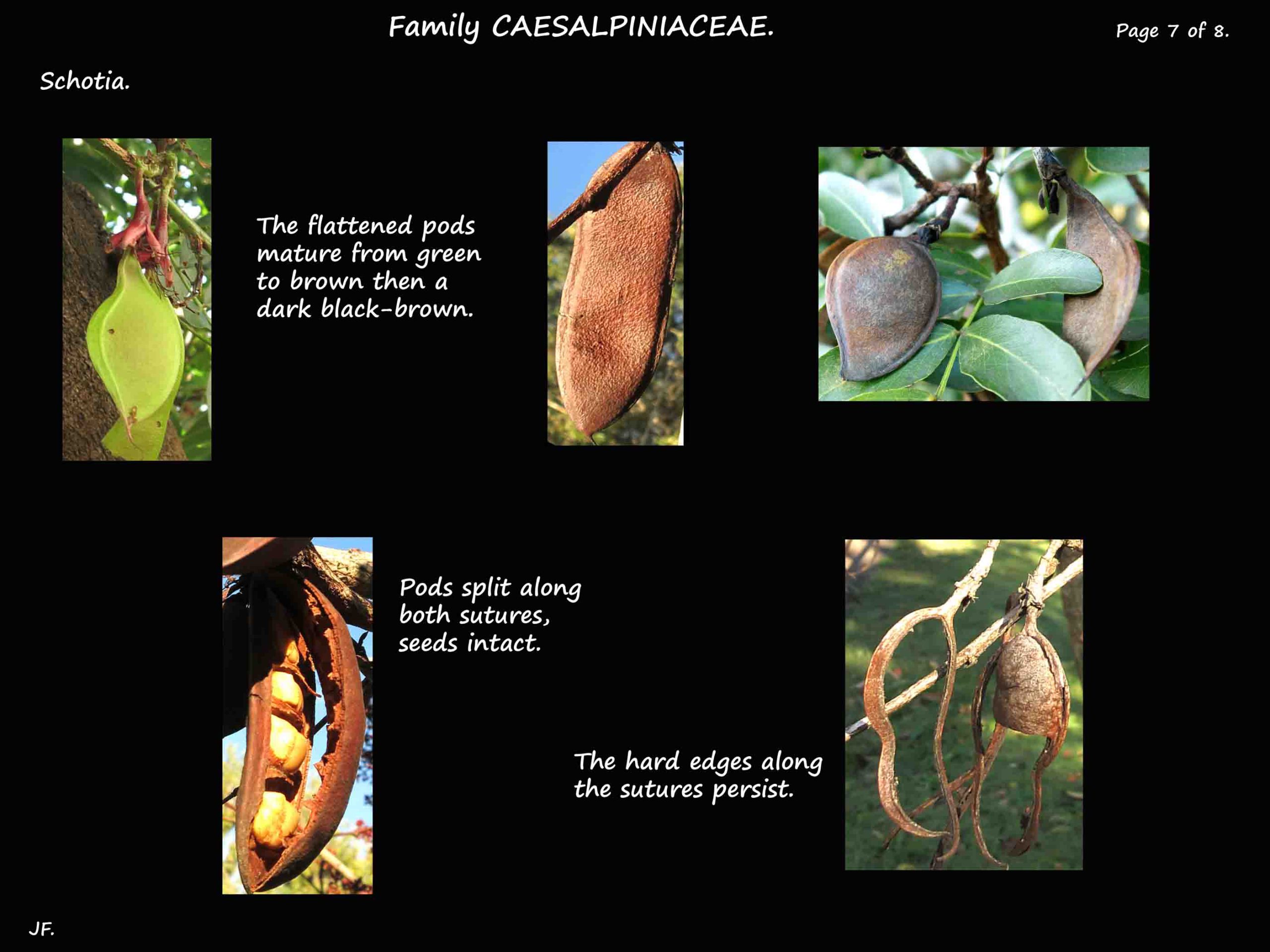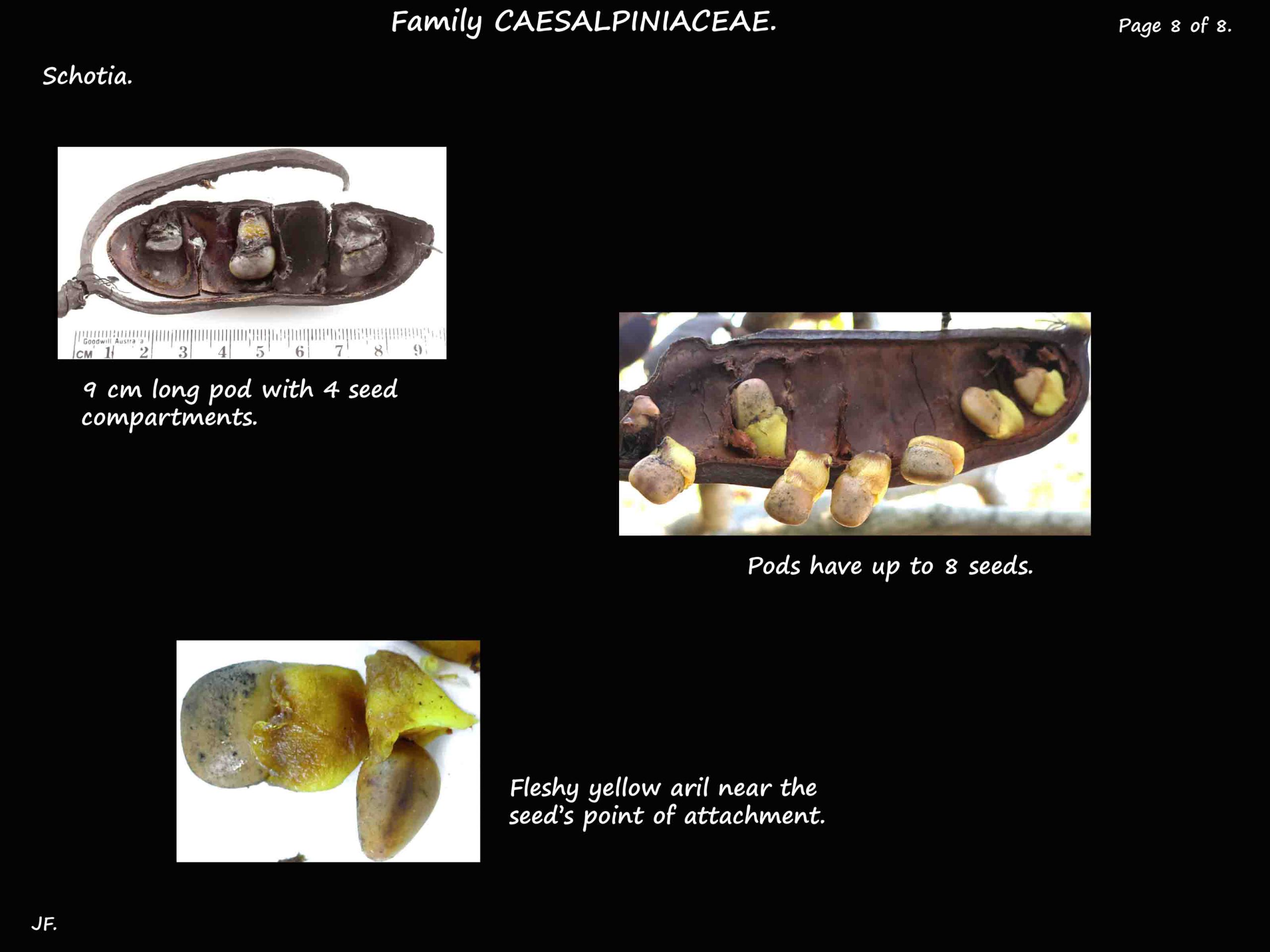Schotia.
Family Caesalpiniaceae (subfamily Caesalpinioideae in Fabaceae s.l.).
A small genus from South Africa with 4 species that hybridise with each other.
Common names include tree or wild fuchsia or the bean tree.
They are common in Brisbane streets and parks.
They can be evergreen to partly deciduous.
They can grow as trees with a single trunk or multi-stemmed shrubs.
Height varies from 3 m up to 20 m and some have a spread of up to 15 m.
They have a dense, rounded crown.
One species grows by scrambling.
Smooth brown to grey bark becomes dark brown with age.
Small green branches have lenticels.
The alternately arranged pinnate leaves, on petioles, are up to 17 cm long.
The flattened midrib may be grooved or winged.
Most have 3 to 5 opposite (or sub-opposite) pairs of leaflets but one species has up to 8.
Leaflets are up to 8 cm long and have no petiolules or ones about 2 mm long.
Leaflets can be oblong, ovate or obovate and smooth or with a few hairs.
Juvenile leaves are reddish and older ones a shiny dark green.
Inflorescences are on old, often leafless wood along the branches.
Each is a small, branched cluster but there are masses of them.
The bisexual flowers are mostly a bright red but can be pink.
Some have a red stalk or pedicel but others have none.
There are bracts.
There are 4 thick fleshy sepals with fused bases and pointed lobes.
There may be 5 petals but these are mostly greatly reduced or absent.
There is a hypanthium formed by fusion of the bases of the petals, sepals and stamens.
The 10 stamens, with their bases fused, can be 2 to 3 cm long.
The filaments are a bright red.
The dorsifixed anthers open via longitudinal slits.
The ovary, on a stalk, is flattened and has a single locule.
The red style has a small, head-like stigma.
Flowers produce a lot of nectar.
The fruit pods, up to 15 cm long, ripen from green to reddish-brown and woody.
They may split open on the tree to release the seeds.
The flattened, pale brown seeds 1 to 2 cm long, have a yellow aril (fleshy appendage).
The 4 species are:
S. afra is small growing 3 to 5 m.
S. latifolia and S. capitata both have 3 to 5 pairs of leaflets.
S. brachypetala is similar to S. capita but has 4 to 8 pairs of leaflets.
S. capita inflorescences are smaller than those in S. brachypetala.
Trees seen in Brisbane are almost all S. brachypetala but S. latifolia is available from nurseries.
J.F.

